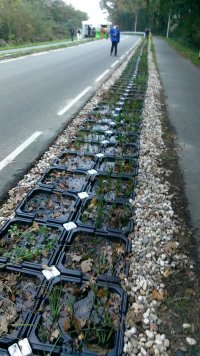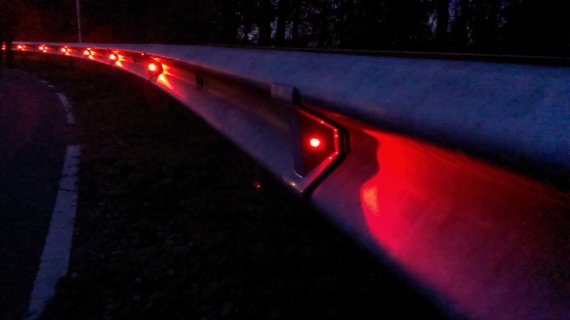In the crash barrier on the viaduct where the Bovenbuurtweg crosses the A12, 10 LED lights illuminate the darkness. This is a first. The lights are fuelled by plant power. The source of the electricity is growing a little way off in the verge on both sides of the road. A couple of thousand plants in trays of 50 by 50 centimetres. All told, 100 hundred square metres of aquatic plants, including several varieties of Carex, kingcups, irises and rushes. The installation is the first more or less useable product of Plant-e, a Wageningen UR spin-off. The battery of plant trays now lying in the verge is destined for a far bigger capacity, though how big is not known precisely at this point.
- Street lights running on plant power.

The development of plant energy is in full swing. Ultimately, according to Plant-e’s calculations, an annual output of 28 kWh per square metre should be possible. That would mean that an installation like that on the Bovenbuurtweg could provide 80 percent of the energy for an average house.
Plant energy is based on the digestion of organic waste by bacteria, harvesting the electrons that are released. In principle this works non-stop, summer and winter, day and night. ‘Only when the ground is frozen does production come to a standstill,’ explains Plant-e spokesperson Nanda Schrama. ‘But there is quite a buffer built into the system. By the time the electricity runs out the winter is probably over.’

